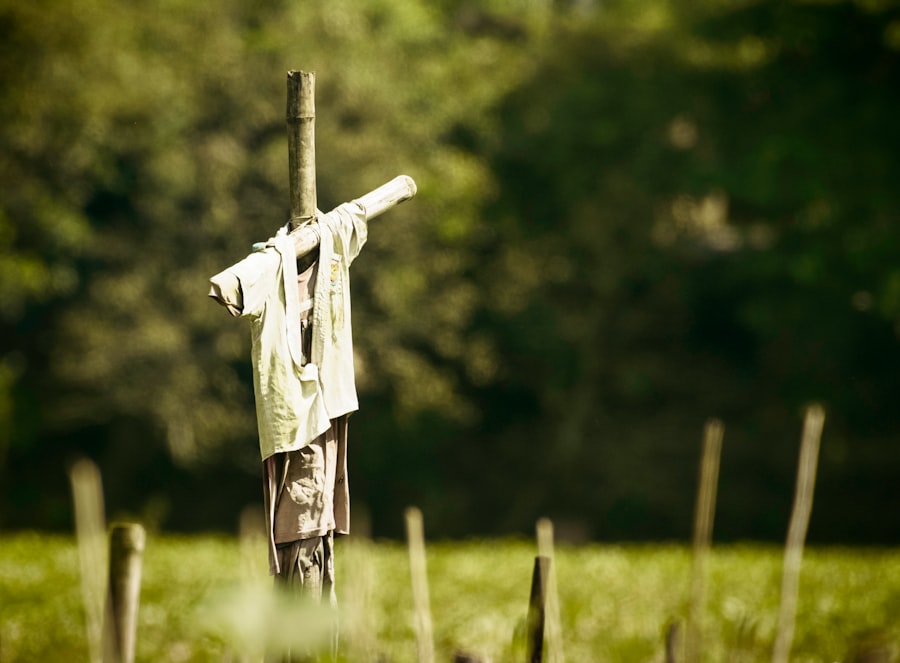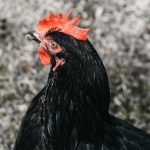Buzzards, also known as hawks or raptors, are birds of prey that pose a significant threat to chickens and other small animals. These large birds possess sharp eyesight and strong talons, making them efficient hunters. Buzzards often target chickens as a food source, particularly in free-range and backyard flocks.
They typically hunt during daylight hours, soaring at high altitudes while scanning the ground for potential prey. Upon spotting a chicken, they descend rapidly and accurately to capture their target. Buzzards are not only active hunters but also scavengers, which makes them a persistent threat to chicken coops and runs.
Their opportunistic feeding habits lead them to exploit any chance for an easy meal. This behavior can be problematic for chicken owners, as buzzards may attempt to breach coop or run security in search of food. Understanding buzzard predatory behavior is essential for implementing effective chicken protection strategies.
These birds are known for their intelligence and adaptability, often modifying their hunting techniques to overcome obstacles. This adaptability makes them a constant threat to chickens, as they may persist in targeting a flock despite initial deterrent measures. Chicken owners must be knowledgeable about buzzard behavior and habits to effectively safeguard their flocks from these predators.
Table of Contents
- 1 Implementing physical barriers: Building a secure coop and run to protect chickens
- 2 Deterrent tactics: Using visual and auditory deterrents to keep buzzards at bay
- 3 Natural repellents: Utilizing natural scents and plants to discourage buzzards
- 4 Scare tactics: Employing scarecrows and other methods to frighten buzzards away
- 5 Predator protection: Introducing guardian animals to protect chickens from buzzards
- 6 Seeking professional help: Consulting with wildlife experts for additional advice and assistance
- 7 FAQs
- 7.1 What are buzzards and why do they pose a threat to chickens?
- 7.2 What are some effective methods to keep buzzards away from chickens?
- 7.3 Are there any natural predators of buzzards that can help keep them away from chickens?
- 7.4 Are there any legal methods to control buzzards if they become a problem for chicken owners?
- 7.5 What are some additional measures chicken owners can take to protect their chickens from buzzards?
Key Takeaways
- Buzzards are a threat to chickens and can be identified by their large size, broad wings, and soaring behavior.
- Building a secure coop and run with strong fencing and a roof can help protect chickens from buzzard attacks.
- Visual deterrents like shiny objects and auditory deterrents like loud noises can help keep buzzards away from chickens.
- Natural repellents such as strong-smelling herbs and plants can discourage buzzards from approaching chicken areas.
- Scarecrows, predator decoys, and other scare tactics can be effective in frightening buzzards away from chickens.
- Introducing guardian animals like dogs or geese can help protect chickens from buzzard attacks.
- Seeking professional help from wildlife experts can provide additional advice and assistance in dealing with buzzard threats to chickens.
Implementing physical barriers: Building a secure coop and run to protect chickens
Building a Secure Enclosure
One of the most effective ways to protect chickens from buzzards is by implementing physical barriers around the coop and run. Building a secure and predator-proof enclosure is essential for keeping buzzards at bay and ensuring the safety of the flock. This can be achieved by using sturdy materials such as hardware cloth or welded wire to construct the walls and roof of the coop and run.
Designing a Buzzard-Proof Layout
It is important to ensure that the wire mesh is tightly secured and extends underground to prevent burrowing predators from gaining access. In addition to the construction of the coop and run, it is important to consider the design and layout of the enclosure. Providing a covered area within the run can offer chickens a safe space to seek shelter from aerial predators such as buzzards. This can be achieved by installing a solid roof or using netting to create a protective canopy over a portion of the run.
Maintenance and Inspection
Creating multiple levels within the enclosure can also help to deter buzzards, as they prefer open spaces for hunting and may be less inclined to enter a confined area. Furthermore, it is important to regularly inspect the coop and run for any signs of wear or damage that could compromise its security. Repairing any holes or weak spots in the wire mesh, reinforcing doors and latches, and securing any loose or protruding objects can help to prevent buzzards from gaining access to the flock. By implementing physical barriers and maintaining a secure enclosure, chicken owners can effectively protect their flock from the threat of buzzards.
Deterrent tactics: Using visual and auditory deterrents to keep buzzards at bay

In addition to physical barriers, visual and auditory deterrents can be effective in deterring buzzards from targeting chickens. These tactics aim to disrupt the hunting behavior of buzzards by creating an environment that is unappealing or intimidating to these predators. Visual deterrents such as reflective objects, predator decoys, and scare tape can be used to create visual disturbances that discourage buzzards from approaching the coop and run.
Reflective objects such as mirrors, CDs, or metallic tape can be hung around the perimeter of the coop and run to create flashes of light that startle and deter buzzards. Predator decoys such as plastic owls or hawks can also be placed in strategic locations to create the illusion of a larger predator presence, causing buzzards to avoid the area. Additionally, scare tape or streamers can be hung in the vicinity of the coop and run to create movement and noise that disrupts the hunting behavior of buzzards.
Auditory deterrents such as noise makers, wind chimes, or predator calls can also be effective in deterring buzzards from targeting chickens. These deterrents create unfamiliar sounds that can startle and intimidate buzzards, causing them to avoid the area. Noise makers such as air horns or whistles can be used to create sudden loud noises that disrupt the hunting behavior of buzzards.
Wind chimes or other noise-making devices can also be strategically placed around the coop and run to create a constant background noise that makes it difficult for buzzards to focus on hunting. By utilizing visual and auditory deterrents, chicken owners can create an environment that is unappealing and intimidating to buzzards, effectively deterring these predators from targeting their flock. It is important to regularly rotate and adjust these deterrents to prevent buzzards from becoming accustomed to them, ensuring their continued effectiveness in protecting chickens from predation.
Natural repellents: Utilizing natural scents and plants to discourage buzzards
In addition to physical barriers and deterrent tactics, natural repellents can be used to discourage buzzards from targeting chickens. Certain scents and plants are known to be unappealing or intimidating to these predators, making them effective tools for protecting a flock from predation. By strategically incorporating natural repellents into the environment around the coop and run, chicken owners can create a deterrent effect that discourages buzzards from approaching.
One natural repellent that is known to deter buzzards is the scent of predator urine. Predator urine such as coyote or fox urine can be applied around the perimeter of the coop and run to create an olfactory barrier that signals the presence of a potential threat. This scent can intimidate buzzards and discourage them from approaching the area, reducing the risk of predation on chickens.
In addition to predator urine, certain plants are known to have repellent properties that can deter buzzards from targeting chickens. Planting aromatic herbs such as lavender, rosemary, or mint around the coop and run can create a natural barrier that is unappealing to buzzards. These plants emit strong scents that can mask the presence of chickens and deter predators from approaching the area.
Furthermore, certain visual deterrents such as brightly colored flowers or shrubs can create a visually unappealing environment for buzzards. Planting flowers with vibrant colors or erecting tall shrubs around the perimeter of the coop and run can create visual disturbances that deter buzzards from approaching. By utilizing natural repellents such as predator urine, aromatic plants, and visually unappealing vegetation, chicken owners can effectively discourage buzzards from targeting their flock.
Scare tactics: Employing scarecrows and other methods to frighten buzzards away
Scare tactics such as scarecrows and other methods can be effective in frightening buzzards away from chickens. These tactics aim to create an intimidating environment that discourages buzzards from approaching the coop and run, reducing the risk of predation on the flock. Scarecrows are one of the most traditional and effective scare tactics for deterring birds of prey such as buzzards.
By erecting scarecrows in strategic locations around the perimeter of the coop and run, chicken owners can create a visual deterrent that intimidates buzzards and discourages them from approaching. In addition to scarecrows, other scare tactics such as motion-activated devices or water sprayers can be used to startle and frighten buzzards away from chickens. Motion-activated devices such as lights or sound emitters can be strategically placed around the coop and run to create sudden disturbances that disrupt the hunting behavior of buzzards.
Water sprayers or sprinkler systems can also be used to create sudden bursts of water that startle and deter buzzards from approaching the area. Furthermore, utilizing noise-making devices such as air horns or whistles can be effective in creating sudden loud noises that frighten buzzards away from chickens. These devices can be activated manually or through motion sensors to create unexpected disturbances that disrupt the hunting behavior of buzzards.
By employing scare tactics such as scarecrows, motion-activated devices, water sprayers, and noise-making devices, chicken owners can effectively frighten buzzards away from their flock.
Predator protection: Introducing guardian animals to protect chickens from buzzards

Effective Guardian Animals
Dogs are particularly effective guardian animals for protecting chickens from predation by buzzards. Their presence alone can create an intimidating environment that discourages aerial predators from approaching the coop and run. Geese are also effective guardian animals for deterring buzzards from targeting chickens. Geese are highly territorial birds that are known for their aggressive behavior towards potential threats.
How Guardian Animals Deter Buzzards
The loud honking calls and aggressive posturing of geese can intimidate aerial predators such as buzzards, making them less likely to approach the area. Similarly, dogs and other guardian animals can create an environment that is unwelcoming to buzzards, reducing the risk of predation.
Other Effective Guardian Animals
In addition to dogs and geese, other guardian animals such as guinea fowl or peafowl can also be effective in deterring buzzards from targeting chickens. These birds are known for their loud calls and aggressive behavior towards potential threats, making them effective deterrents for aerial predators such as buzzards. By introducing guardian animals into the environment around the coop and run, chicken owners can provide an additional layer of protection for their flock against predation by buzzards.
Seeking professional help: Consulting with wildlife experts for additional advice and assistance
In some cases, it may be necessary for chicken owners to seek professional help from wildlife experts for additional advice and assistance in protecting their flock from predation by buzzards. Wildlife experts have specialized knowledge and experience in dealing with predatory birds such as buzzards, making them valuable resources for implementing effective strategies for protection. These professionals can provide valuable insights into the behavior and habits of buzzards, as well as offer guidance on implementing appropriate deterrent tactics.
Wildlife experts can also provide assistance in assessing the security of the coop and run, identifying potential weak spots or vulnerabilities that may need reinforcement. They can offer recommendations on improving the physical barriers around the enclosure, as well as provide guidance on utilizing natural repellents and scare tactics effectively. Additionally, wildlife experts may be able to offer advice on introducing guardian animals into the environment around the coop and run for added protection against predation by buzzards.
Furthermore, wildlife experts may have access to specialized tools or equipment that can aid in deterring buzzards from targeting chickens. They may be able to provide access to motion-activated devices, predator calls, or other deterrents that are specifically designed for deterring birds of prey such as buzzards. By consulting with wildlife experts for additional advice and assistance, chicken owners can gain valuable insights into protecting their flock from predation by these formidable hunters.
In conclusion, protecting chickens from predation by buzzards requires a multi-faceted approach that incorporates physical barriers, deterrent tactics, natural repellents, scare tactics, guardian animals, and professional assistance. By understanding the behavior of buzzards and implementing effective strategies for protection, chicken owners can ensure the safety and well-being of their flock in the face of this formidable threat.
If you’re looking for tips on how to keep buzzards away from your chickens, you may also be interested in learning about the best kind of coop for chickens. Check out this article to find out more about creating a safe and secure environment for your feathered friends.
FAQs
What are buzzards and why do they pose a threat to chickens?
Buzzards are large birds of prey that are known to attack and kill small animals, including chickens. They pose a threat to chickens as they can swoop down and carry off small birds, or even attack and kill them on the ground.
What are some effective methods to keep buzzards away from chickens?
Some effective methods to keep buzzards away from chickens include using scare tactics such as visual deterrents like shiny objects or scarecrows, using noise deterrents like loud noises or predator calls, and providing physical barriers such as netting or fencing around the chicken coop.
Are there any natural predators of buzzards that can help keep them away from chickens?
Yes, natural predators of buzzards such as larger birds of prey or mammals like foxes or coyotes can help keep buzzards away from chickens by creating a natural deterrent for them.
Are there any legal methods to control buzzards if they become a problem for chicken owners?
In some cases, if buzzards become a problem for chicken owners, they may be able to obtain a permit to control the buzzard population through legal means such as trapping or shooting, but this varies by location and it’s important to check local regulations and laws before taking any action.
What are some additional measures chicken owners can take to protect their chickens from buzzards?
In addition to using scare tactics and natural predators, chicken owners can also consider keeping their chickens in covered or enclosed areas, using motion-activated sprinklers or lights to startle buzzards, and being vigilant about keeping the area around the chicken coop clean and free of any potential food sources for the buzzards.
Meet Walter, the feathered-friend fanatic of Florida! Nestled in the sunshine state, Walter struts through life with his feathered companions, clucking his way to happiness. With a coop that’s fancier than a five-star hotel, he’s the Don Juan of the chicken world. When he’s not teaching his hens to do the cha-cha, you’ll find him in a heated debate with his prized rooster, Sir Clucks-a-Lot. Walter’s poultry passion is no yolk; he’s the sunny-side-up guy you never knew you needed in your flock of friends!







